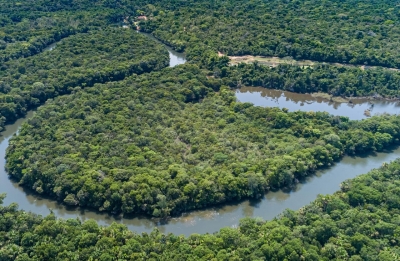
The Amazon River or River Amazon of South America has a greater total flow than the next six largest rivers combined. It is sometimes known as The River Sea. The Amazon is also regarded by most geographic authorities as the second longest river on Earth, the longest being the Nile in Africa.
The drainage area of the Amazon in Brazil, called the Amazon Basin, is the largest on Earth. If the Basin were an independent country, it would have more than twice the area of India.
The quantity of fresh water released by the Amazon to the Atlantic Ocean is enormous: up to 300,000 m³ per second in the rainy season. The Amazon is responsible for a fifth of the total volume of fresh water entering the oceans worldwide. It is said that offshore of the mouth of the Amazon potable water can be drawn from the ocean while still out of sight of the coastline, and the salinity of the ocean is notably lower a hundred miles out to sea. This mixture of fresh and salt water is known as brackish water.
This quantity of water causes the Amazon to have no clouds above the channel near its mouth. These are usually taken in the morning, when water is colder and land is beginning to be much warmer. Above big rivers (the Orinoco and Caura rivers in Venezuela and many more have the same characteristic), cold waters create a high pressure air mass which make rivers easy to see through clouds. On the contrary, during afternoons, clouds cover most river channels.
Credit: cs.mcgill.ca
Picture Credit : Google



